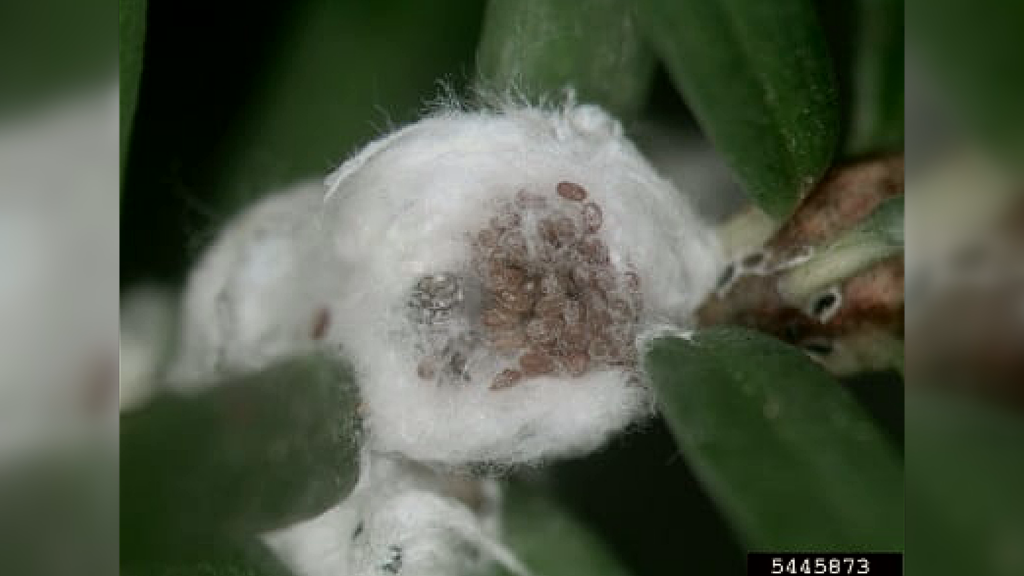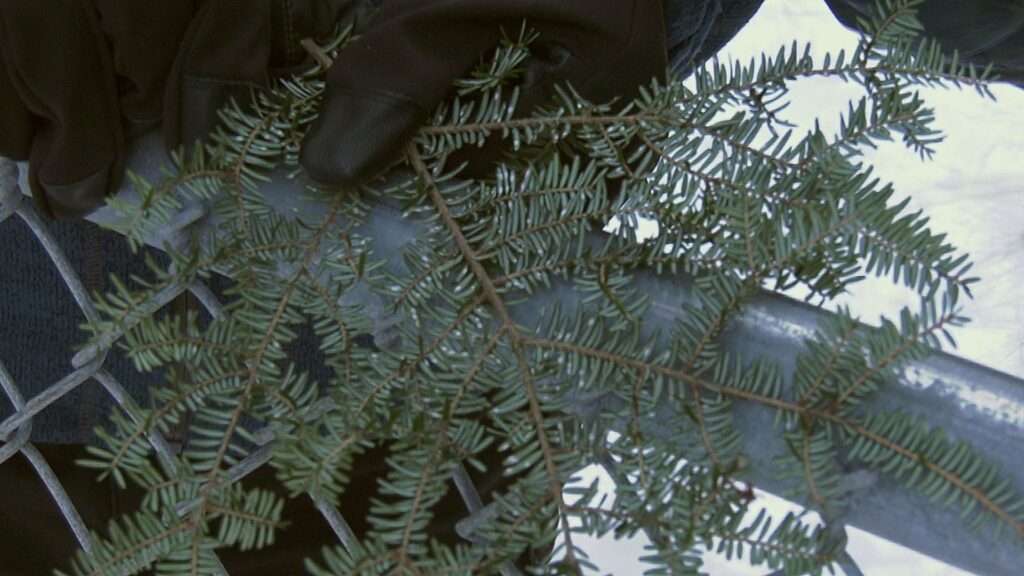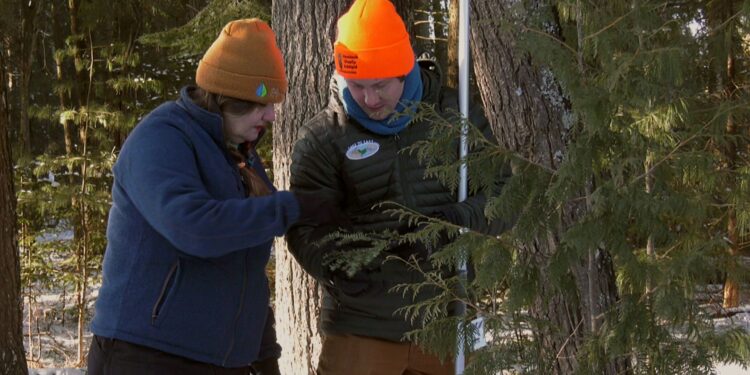BARK RIVER, Mich. (WZMQ) – A Central U.P. invasive species management organization is on the lookout for an insect invading Michigan forests.
On Tuesday, representatives from the Lake to Lake Cooperative Invasive Species Management Area (CISMA) visited O.B. Fuller Park in search of hemlock woolly adelgid.
“This is an insect that affects our eastern hemlock trees,” said CISMA Coordinator Elise Desjarlais. “It’s a native tree that’s really important for forest ecosystems, riparian zones along river corridors like we have here today, and a lot of deer habitat and everything as well. It’s a really important habitat tree.”
CISMA partnered with the Delta Conservation District to survey the trees. The group took samples from the branches to look for the distinctive signs of the invasive species.
“What we’re looking for today is white, fluffy looking,” Desjarlais explained. “It’s actually insect ovisac that’s on the underwise of the branches. The insect feeds on the tree by sucking sap off of the tree, so it really just degrades the ability for the tree to get nutrients up into the canopy.”

According to Desjarlais, the hemlock woolly adelgid can cause a lot of damage in a relatively short amount of time.
“Within five to ten years or so, it can fully kill a mature tree,” she said. “It’s a pretty destructive little insect for being so small.”
To date, hemlock woolly adelgid has not been found in the Upper Peninsula. However, there are lookalikes.
“This is another type of insect that’s on here, but it’s not hemlock woolly adelgid,” Desjarlais said of the branch in the image below. “Hemlock woolly adelgid will always be right where the twig is meeting the branch.”

Anyone who suspects they may have found hemlock woolly adelgid is encouraged to contact CISMA, their local conservation district, the State Department of Agriculture & Rural Development, or the Michigan DNR right away. Desjarlais says when it comes to saving the U.P.’s eastern hemlock trees, early detection is key.
“Even if it’s a spider egg sack or some fluff that’s in a tree, we’d rather have a false report than to have somebody kind of brush it off and not report it,” she said. “We’re really on a high alert lookout for it because it isn’t here yet, and we want to catch it if it is really early.”
For more information on the Lake to Lake Cooperative Invasive Species Management Area, click here or call (906) 226-8871 ext. 3068.

















